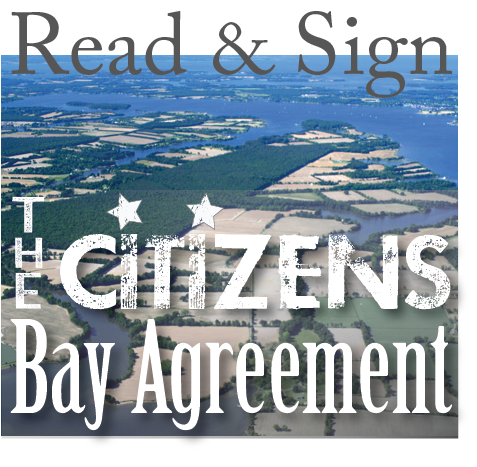Chesapeake Bay Action Plan
After decades of effort, the voluntary, collaborative approach to restoring the health and vitality of the Chesapeake Bay— the largest estuary in the United States—has not worked and, in fact, is failing.
A diverse group of 57 senior scientists and policymakers have joined forces to save the Bay. This is our plan.
The devastating Chesapeake blue crab collapse
Other factors affecting crab numbers include a failure to restore bay grasses (crab nurseries), polluted waters and invasive species. But the harsh reality is that the increasing harvest pressure triggered by astronomical crab prices is the only readily controllable fix to prevent an imminent crab collapse. However, all harvest restrictions — both existing and new — are rendered meaningless in Maryland because of nearly nonexistent enforcement. Tragically, the Maryland Department of Natural Resources (DNR) has chosen a laissez-faire approach to enforcement, allowing crabbers to act with impunity.
The long, sad degradation of the Chesapeake Bay region
Exacerbating this growing problem in our throwaway society is the disintegration of plastic products into microplastic as these tiny forever chemicals are now found in every area of the bay and its rivers. Plastic production and disposal increased 200-fold globally over the past 60 years. More than 60% of all seabirds have ingested plastic and many of our fish ingest these microplastics, as do oysters.
The Ethanol Scam Continues as U.S. Ramps Up Production
Corn ethanol has not contributed to our energy independence as its life cycle is likely a wash or worse in negative energy savings. Largely due to fracking, the U.S. is now the largest producer of both oil and natural gas. We export increasing amounts of both as production ramps up, and now our net exports exceed imports.
The recent landmark, peer-reviewed research underscores that corn ethanol adds to climate change and causes other substantial problems. It’s well past time to repeal this boondoggle.
It’s time for DNR to restrict the commercial crab harvest
The time has come for DNR to restrict commercial harvest by adopting strict daily bushel limits for males and greatly decreasing the bushel limits for females, reducing the number of crab pots used, shortening the crabbing season, closing crabbing two days each week, and adopting a quota system for each commercial crabber as with rockfish.
Best practices for lawn care when living in the Chesapeake Bay watershed
rigorous scientific review found that the world’s insects are hurtling down the path to extinction, threatening a “catastrophic collapse of nature’s ecosystems.” More than 40% of insect species are declining radically including 53% of butterfly and 46% of bee species; some are critical pollinators responsible for 35% of the world’s food crops. More than 3,500 species of native bees sustain these crop yields. Three-fourths of the world’s flowering plants also depend on pollinators. Pesticides are clearly implicated in these radical declines of insects as well as other pollinators including moths, birds, and bats.
Officials, Chesapeake Bay Foundation must take action to prevent flesh-eating diseases
We need to greatly ratchet down the nutrients especially from agriculture and also from existing and new development. The environmental community must change its tactics and stand up to agribusiness and use the courts and legislature to crack down on this major source of bay pollution. We also must significantly reduce global warming emissions that lead to rising water temperatures and increased nutrients, both which fuel the proliferation and deadliness of flesh eating organisms.
Ending population growth is a mark of progress
Economic growth does not require population increases. We can grow our economy by using education and technology to increase productivity. We live in a world of finite resources with food, water, and health care insecurity. With slower or zero population growth, we can make greater progress toward resolving economic and environmental issues and boost our productivity as a nation and the quality of life for all of us. Calling for population growth to increase the number of workers flies in the face of the need to find employment for the 6.3 million currently unemployed.
With the climate crisis bearing down, Maryland legislators cave in to fossil fuels
Suspending the gas tax may sound good, but it’s a bad idea. Are our elected officials blind to the fact that almost nine out of every 10 barrels of oil used in Maryland are consumed by the transportation sector and that 36% of greenhouse gas emissions come from motor vehicles? Or that Americans use more oil than any nation, exceeding the next highest nation by 54% while consuming 20% of all oil with only 4% of the world’s population?
We are senior Chesapeake Bay scientists and policymakers from Maryland, Virginia and Pennsylvania who have concluded that after decades of effort, the voluntary, collaborative approach to restoring the health and vitality of the largest estuary in the United States has not worked and, in fact, is failing. Our group unanimously recommends that all states draining into the Chesapeake Bay adopt our 25 action items in their Watershed Implementation Plans (WIP) and implement them to improve the Bay’s water quality and to meet the requirements of the Clean Water Act.
Sign up for news & updates from Patuxent Riverkeeper



